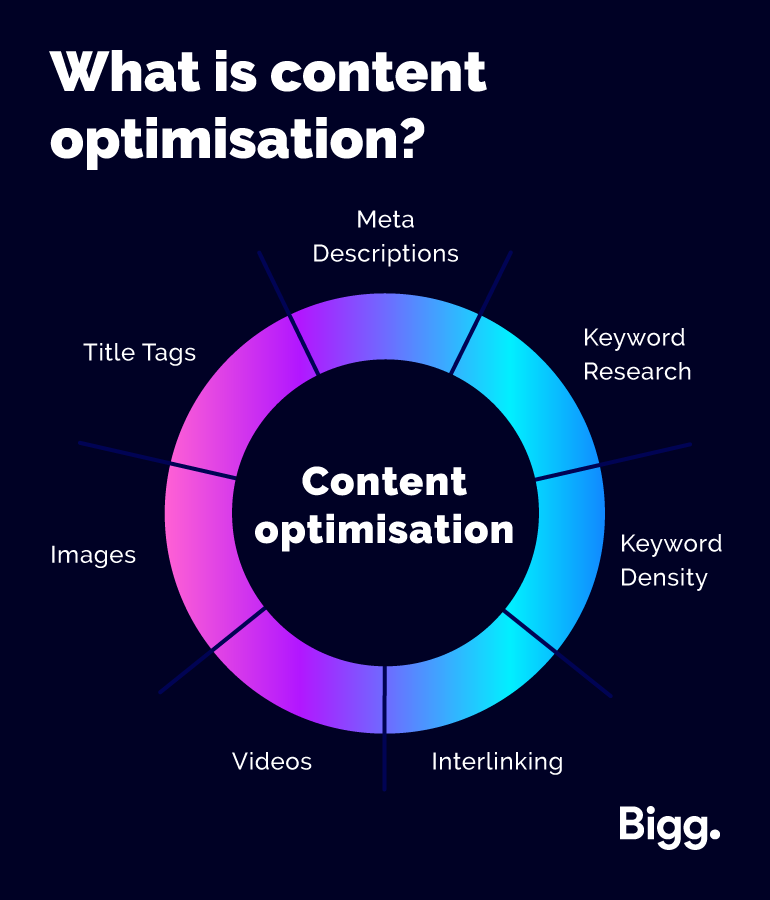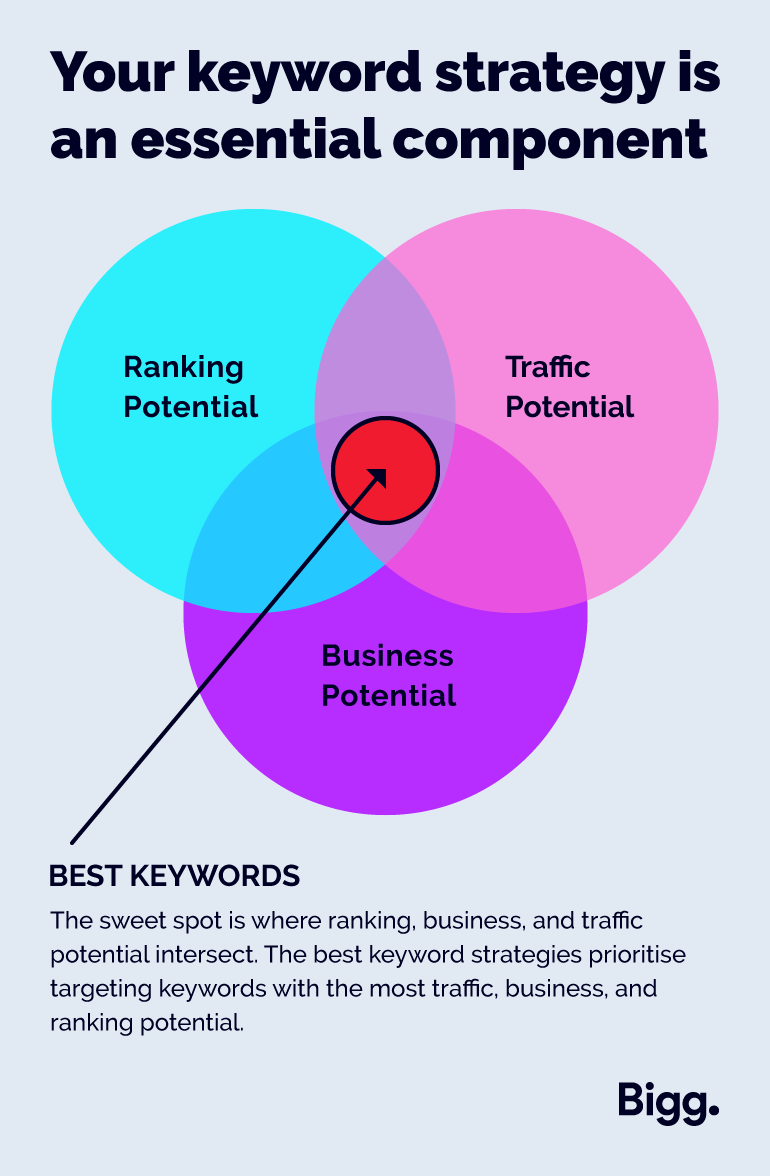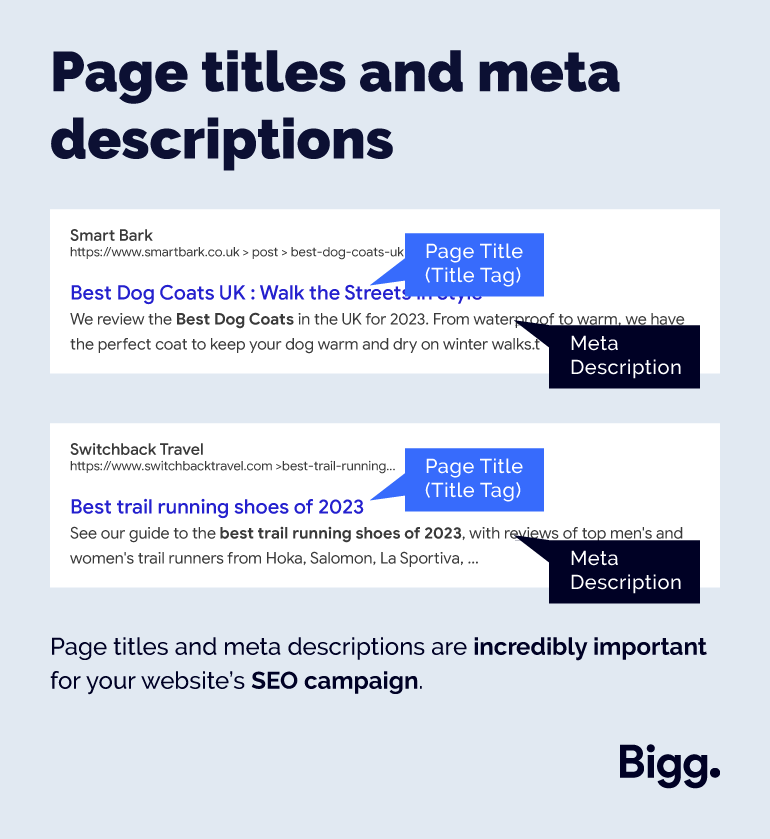Are you putting a lot of effort into your website’s content, but aren’t reaping the benefits you thought you’d be seeing? Chances are you’re not optimising it effectively.
It’s all well and good creating well-written, informative content, but in order to rank in results pages, engage customers and increase conversion rates then you need to approach your content in a formulaic way – we know this may sound unnatural, but trust us, it works!
So, what are the basic tips for content optimisation? We’ll walk you through them as we discuss the following:
- How do you optimise content for SEO?
- How do you optimise content for site visitors?
- How and why you should measure the success of your content.
With our helpful tips, you can rest assured that you’ll be seeing better results in no time.
What is Content Optimisation?
Content optimisation is the process of refining and improving the content on your website so that it better achieves its desired goals.
For example, this could be you wanting blog posts to rank higher on Google results pages, to turn more site visitors into customers or to increase shares on social media.
There are three core elements that you should be looking to improve as part of your content optimisation:
- Visibility
- Engagement
- Effectiveness

Why Content Optimisation is Important
Content optimisation is vital for achieving your wider marketing goals. This is predominantly because it allows you to better rank on Google results, which in turn will increase your visibility, position your brand as an authority, drive more traffic to your site and increase leads and sales.
SEO: How to Optimise Your Content for a Search Engine
Search engine optimisation, better known as SEO, and content marketing work hand in hand when it comes to improving your site’s ranking in the results page on Google and other search engines.
There are some key factors that influence how your web pages rank in these results pages that you should consider when generating content.
Integrate Keywords
Keywords are vital to content marketing. These are the words and terms that someone may type into the search bar of Google, which then provides results based on where these keywords turn up on web pages.
When it comes to choosing keywords (there are plenty of keyword research tools online that can help with this) and integrating these into your content, there are two things that you want to keep in mind: relevance and traffic potential.
- Relevance
Not only do you want to use keywords that are relevant to your products and services, but you want to use them in a way that is relevant to users’ search intent.
The topics you cover in your content should answer the question or need that your audience is searching for, with your keywords acting as the semantic bridge between the two.
- Traffic Potential
It’s all very well finding a keyword that you’ll rank high for, but if no one is searching for these terms then there won’t be enough traffic potential to lead people to your site.
You want to find the right balance between high traffic and low competition.

Top Tip: Remember to naturally incorporate keywords throughout your page, including your title tag, meta description, headings and the main body of content - but don’t cram them in where they don’t make sense!
Create a Crawlable Structure
In short, crawling is the process whereby search engine bots quickly discern what content is on your page and its relevance to search queries in order to determine where to rank it on their results page.
Creating a clear structure helps these bots to understand your page, which you can do through the effective use of a title tag, meta description and headings.
Title tags and meta descriptions are the first thing readers see when you show up on a results page, so should clearly summarise what your page is about and be written to the optimum character count.
As for headers, implementing these not only helps Google to understand what your content is about, but also helps with readability.

Add Internal & External Links
Internal links are links that take a user to another page on your website. The more of these you have, the easier Google can find, index and understand the pages on your site, thus improving your chances of ranking.
You should also include external links where possible, which link to a separate website that is high quality, relevant to your content, and reliable. Doing this means Google is more likely to view your own site as being relevant and trustworthy.
Engaging Your Audience: How to Optimise Your Content for Readability & Style
Create a Readable Structure
In order to keep the attention of your audience, you want to create content that is easy to scan and digest.
Being presented with long paragraphs with no variation in visuals is overwhelming and a sure way to scare readers off. Instead:
- Use clear headers, subheadings and bullet points to break up your content.
- Have distinguishable paragraphs and vary sentence lengths.
- Adapt your tone depending on the content style (e.g. informative tone for product descriptions vs personal, informal tone for social media and blog posts).
Incorporate Visuals & Multimedia Elements
Another way to better engage your audience is through the use of impactful visuals.
You can achieve this by utilising different colours and fonts, including images (with optimised alt tags and file names) or by incorporating other multimedia elements, such as:
- Infographics
- Gifs
- Videos
- Audio (e.g. text-to-speech assistance)
Top Tip: Remember to include social media icons on your site that link to your relevant social pages!
Measuring the Success of Your Content with Analytics
Now that you know how to optimise your content, how can you go about measuring the success of your efforts?
Though content itself is considered qualitative, there are certain metrics that can be used to measure the success of your content marketing strategies, such as:
- Ranking positions
- Traffic sources
- Impressions
- Click-through rates
- Shares and backlinks
- Bounce rates
- Keyword rankings
Measuring these is key for identifying where your content optimisation efforts are succeeding and where they can be improved.
There are various tools out there that can be used to stay on top of these metrics, with some of the most popular ones including Google Analytics, SEOquake and Semrush.
We understand that it’s hard to juggle your marketing goals whilst running a business – especially when it comes to something as specific and time-consuming as writing content for your website. That’s why we’re here to help at Bigg.
With a dedicated team of in-house content writers, we’re experts in creating and optimising content that delivers results. Let us help you meet your digital marketing goals and be part of the driving force behind your business’s success – get in touch with us today!


Comments are closed.